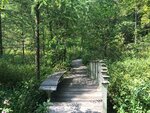


As one of the hottest summers on record in Minnesota – and the United States – recently came to a close, a new study has shed some light on a way for urban communities like Minneapolis to better deal with extreme heat.
The study, “Cooling Cities: Harnessing Natural Areas to Combat the Heat,” found forested areas within cities were significantly cooler than paved or even landscaped areas.
The Natural Areas Conservancy conducted the study in collaboration with 27 nonprofits, municipal and county governments, academic institutions and private contractors around the U.S., including the Minneapolis Park and Recreation Board. Over the course of summer 2022, researchers collected data from 40 sites across 12 cities, including three Minneapolis parks: Minnehaha Regional Park, North Mississippi Regional Park, and Theodore Wirth Regional Park.
The study analyzed surface and air temperatures at three different sites within a city: both “healthy” and “degraded” forests in natural areas, along with landscaped areas with trees, such as streets or parks, according to a news release.
On some hot summer days, the study found a forested natural area was 10 degrees cooler than a nearby tree-lined street.
James Shaffer, the natural resources supervisor for the park board, said the study underscores the potential of forests in urban areas like Minneapolis to help address urban heat islands and combat the effects of climate change. Urban heat islands occur when cities replace natural spaces with buildings, roads, and parking lots that absorb and hold heat, raising the surface temperature in the area. It’s why you’ll often notice cities experiencing higher temperatures than surrounding, more rural areas.
“We’re seeing these greater heat events within our city, within the country,” Shaffer said. “Having these forested natural areas within urban environments can help the city deal with and mitigate some of the extreme urban heat island events that we’ve been getting and maybe even potentially provide some refuge during these events.”
The study also found that the quality of the forested area matters. A forested area with more canopy cover, vegetation layers, and native species performed better than an area lacking those characteristics. For instance, an area in Theodore Wirth Park where the park board is performing restoration work to remove invasive species may have a greater cooling effect than an area that has not yet been restored, Shaffer said.
“Overall, the trend is that if you invest in your natural areas like this, you’re going to see this cooling effect in those zones,” Shaffer said.
Shaffer said the park board will most likely look to the findings of this study in determining which areas of Minneapolis’ park system to focus on and prioritizing their resources.
“Knowing this effect potentially exists is potentially something we can take into account when we’re planning out our management activities,” he said.
Comments
No comments on this item Please log in to comment by clicking here